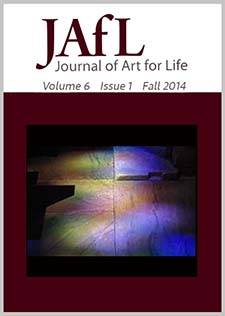The Way We Get By: Aesthetic Engagement with Place
Keywords:
art, place, landscape, ethicsAbstract
The intersection of aesthetics and ethics has a long history in philosophy. Kant wrote The Critique of Judgement as means to use aesthetic judgment to reflect how an ethical judgment could be both universal and particular; the result of judgment “must involve a claim to validity for all men.”[1] However, in the context of contemporary environmentalism, there is still much ambiguity and countless bewildering suggestions for the relationship between aesthetics and ethics in actual practical modes of existence.
Some contemporary art practices however, directly encourage a connection between aesthetics and ethics through a form of aesthetic engagement with the landscape. This type of engagement with the landscape is intended as a form of questioning. The word “engagement” itself is a significant as part of this phrase. The etymology of the word “engagement” stems from the French word “engager” meaning to pledge, commit, involve, encourage, hire or enlist.
This manuscript will argue that certain aesthetic expressions have the ability to create a relationship with the environment that has personal meaning and engages the individual into the derivation of a personal ethos. This claim is also accompanied by the assertion that contemporary environmental discourse is inhibited by a deficient collaboration with artistic practice.
[1] Immanuel Kant. The Critique of Judgement. Trans. James Creed Meredith. Oxford: Clarendon Press, 1952, 51.
Downloads
Issue
Section
License
Authors who publish with this journal agree to the following terms:- Authors retain copyright and grant the journal right of first publication with the work simultaneously licensed under a Creative Commons Attribution License that allows others to share the work with an acknowledgement of the work's authorship and initial publication in this journal.
- Authors are able to enter into separate, additional contractual arrangements for the non-exclusive distribution of the journal's published version of the work (e.g., post it to an institutional repository or publish it in a book), with an acknowledgement of its initial publication in this journal.
- Authors are permitted and encouraged to post their work online (e.g., in institutional repositories or on their website) prior to and during the submission process, as it can lead to productive exchanges, as well as earlier and greater citation of published work (See The Effect of Open Access).


